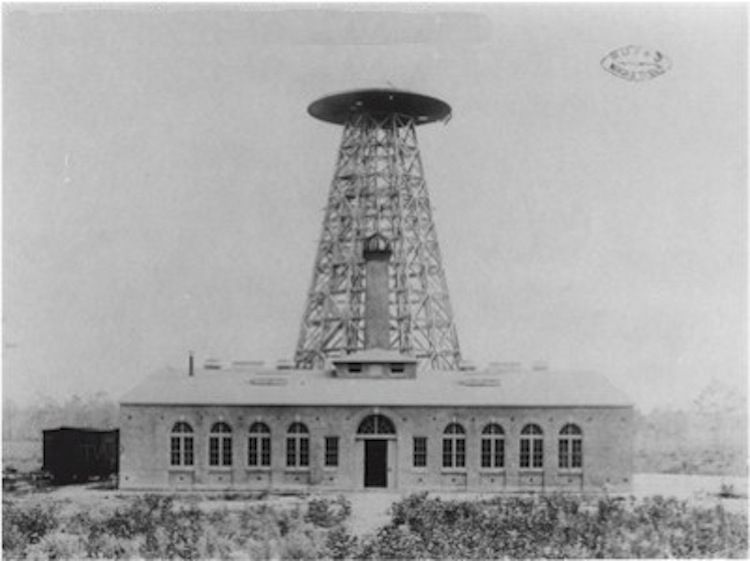5 Visions That Showed Nikola Tesla Was Ahead of His Time

Modern society owes a lot to Nikola Tesla.
The Serbian-American scientist's inventions led to the radios and power grids used today. Over the course of his life, Tesla registered some 300 patents under his name, and traces of his inventions can be found in many modern-day devices, including in some unexpected places, such as remote-controlled boat toys and letter-shaped neon lights.
But not all of Tesla's futuristic visions came to fruition. Some of the inventor's most far-out and ambitious dreams went unrealized, such as his vision for the wireless transmission of energy. In other cases, what Tesla invented was simply not practical enough to replace existing systems, such as the bladeless steam turbine, or was too dangerous to use, such as a steam-powered electric generator that came to be known as the "earthquake machine," after Tesla claimed the generator caused an earthquake in New York City in 1898. [Photos: Nikola Tesla's Historic Lab at Wardenclyffe]
And there were other times when Tesla's ideas were just too revolutionary to fathom, or were so bizarre that they were ridiculed by other scientists. Some of Tesla's theoretical inventions, such as a "death ray" weapon and force field, existed only in science fiction.
But in the 71 years since Tesla's death, some of the eccentric inventor's ideas have come to pass — the "mad scientist" may have actually been on to something. Here is a look at some of Tesla's most bizarre ideas that had some ties to reality.
The thought camera
Tesla may have thought about inventing a machine to read mental imagery and thoughts. In an article published in the Kansas City Journal-Post in September 1933, he told reporters about several projects he had been working on, including a device that concerns "photographing of thought."
Sign up for the Live Science daily newsletter now
Get the world’s most fascinating discoveries delivered straight to your inbox.
"I expect to photograph thoughts," Tesla said. "In 1893, while engaged in certain investigations, I became convinced that a definite image formed in thought, must by reflex action, produce a corresponding image on the retina, which might be read by a suitable apparatus…Now if it be true that a thought reflects an image on the retina, it is a mere question of illuminating the same property and taking photographs, and then using the ordinary methods which are available to project the image on a screen.
"If this can be done successfully, then the objects imagined by a person would be clearly reflected on the screen as they are formed, and in this way every thought of the individual could be read. Our minds would then, indeed, be like open books," he continued.
Tesla's plan never became a reality, but researchers are still studying vision and exploring the idea of mind-reading machines. Today, scientists have created artificial retinas through sophisticated mathematical analyses of how real retinas convert images to electrical impulses to send up to the brain. In attempts at mind-reading, scientists have developed algorithms that can learn to interpret brain signals and reproduce a rough version of images "seen" in a person's mind.
Livestreamed video
Tesla may have had a good grasp of what it feels like to watch real-time streaming of video on modern-day laptops and smartphones. In a news clip published on Jan. 26, 1926, Tesla predicted that by applying the principles of radio, future devices will enable people to carry a small instrument in their pockets to see distant events, according to the Associated Press. [Creative Genius: The World's Greatest Minds]
The futuristic idea was described in an interview published in the current issue of Collier's Weekly, in which Tesla says, "We shall be able to witness the inauguration of a president, the playing of a World's Series baseball game, the havoc of an earthquake, or a battle just as though we were present."
Wireless electricity
Perhaps the greatest ambition of Tesla was his dream to wirelessly transmit energy across long distances, using only air as a medium. He demonstrated it was possible to wirelessly light up lamps using a method called inductive coupling, but he wasn't successful in building a long-range system to broadcast energy.
But now, researchers have refined and developed several techniques that may have brought Tesla's dream a few steps closer to reality. The areas of exploration range from wireless charging of digital devices at home to potential power supplies for space elevators. Still, there are some major barriers. Even working prototypes for the short-range wireless transmission of electricity show that engineers have a long way to go before these innovative techniques can replace existing systems and become widely used.
Contact with aliens?
In 1899, during the time Tesla spent in Colorado Springs, Colorado, experimenting with high-frequency electricity and wireless telegraphy, Tesla picked up peculiar radio signals on his instruments. He believed the signals were extraterrestrial in origin.
"The changes I noted were taking place periodically and with such a clear suggestion of number and order that they were not traceable to any cause known to me. I was familiar, of course, with such electrical disturbances as are produced by the sun, Aurora Borealis, and earth currents, and I was as sure as I could be of any fact that these variations were due to none of these causes," Tesla wrote in Collier's Weekly in 1901.
"The feeling is constantly growing on me that I had been the first to hear the greeting of one planet to another," Tesla wrote.
The scientific community didn't believe Tesla had made contact the aliens, but later, it was suggested that he may have picked up cosmic radio waves, a phenomenon that was not known at the time. Or, it's possible that Tesla's sensitive instruments had received the radio messages that Italian inventor Guglielmo Marconi was transmitting from Europe.
Cellphones
In 1901, when working on creating trans-Atlantic radio, Tesla proposed what now sounds like a modern-day cellphone to his funder, J.P. Morgan. The idea was to create a plan for a "World Telegraphy System" that allows instant communication of news to individual handheld devices.
Tesla believed Morgan could make money by manufacturing such receivers that could be used by anyone, and could pick up voice messages or music played in distant places. According to W. Bernard Carlson, a historian at The University of Virginia, and author of "Tesla: Inventor of the Electrical Age" (Princeton University Press, 2013), the scientist had envisioned cellphones, and his prediction was a harbinger of the consumer culture that would characterize the 21st century.
Email Bahar Gholipour . Follow LiveScience @livescience, Facebook & Google+. Originally published on Live Science .













